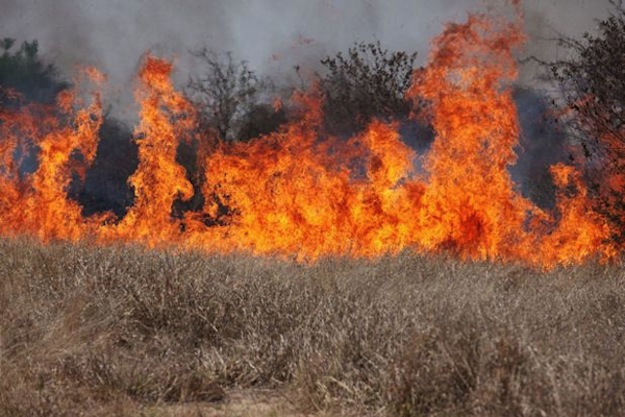How Climate Change Could Make Mercury Pollution Worse

Mercury pollution and climate change are both unintended consequences of burning fossil fuels for centuries. A new study finds another link between the two problems: Climate change has the potential to make mercury pollution worse.
Mercury is a particularly persistent pollutant, and sticks around in surface waters and the air for centuries, said Dave Krabbenhoft, a researcher at the U.S. Geological Survey in Middleton, Wis. As a volatile metal, it vaporizes at relatively low temperatures, and can cycle between the water and the atmosphere, evaporating from the ocean before becoming deposited back on its surface, Krabbenhoft told LiveScience.
In fact, most mercury found in the atmosphere and the ocean arrived there from human activities such as coal combustion and mining decades to centuries ago, studies show. Today, small-scale gold mining is the largest source of new mercury pollution, Krabbenhoft said.
The toxic metal's mercurial nature makes it sensitive to changes in climate, according to a study co-authored by Krabbenhoft published today (Sept. 26) in the journal Science.
Wildfires, for example, are expected to become more prevalent in a warming world, said Brian Branfireun, a researcher at the University of Western Ontario in Canada, who wasn't involved in the study. Soils and vegetation can lock up mercury for decades, so when they burn, they can release "potentially significant" amounts of the toxic metal into the atmosphere, Branfireun told LiveScience.
Second, models of climate change generally predict more intense rainfalls and floods, which could increase soil erosion and the release of sediment-bound mercury into rivers and the ocean, according to the study. Wildfire-stricken areas are also known to have higher levels of soil erosion and runoff, the scientists wrote, another possible source of pollution.
Finally, thawing of permafrost in the Arctic as temperatures in the region rise could also lead to more soil runoff of mercury, Branfireun said. "I think undoubtedly the location of the greatest changes will be at the high latitude in the poles, since this is where climate change is increased in magnitude," Krabbenhoft said.
Sign up for the Live Science daily newsletter now
Get the world’s most fascinating discoveries delivered straight to your inbox.
All of these factors could increase the amount of mercury found in the ocean. Scientists focus on oceanic mercury because this is where the element is converted into methylmercury, the toxic, carbon-containing form that accumulates in fish; eating seafood is the primary way humans are exposed to the heavy metal, studies show. Most methylmercury is produced by microbes in the lower ocean's dark conditions, according to a study published earlier this year in Nature Geoscience. [Is Sushi Safe to Eat?]
Mercury is eventually taken out of the reach of humans in deeply buried sediments and at the bottom of the seafloor, but that takes centuries to millennia, Krabbenhoft said.
To deal with increasing mercury pollution, policymakers and scientists from around the world will meet in Minamata, Japan, in early October to formalize an agreement to reduce mercury pollution in a number of ways. Minamata is the site of huge mercury release by a chemical company decades ago that had serious health consequences for the local population, leading to the eventual disability and deaths of thousands of residents.
Although the convention is expected to reduce mercury pollution in the coming decades, levels of the pollutant are still expected to rise for decades, due its persistent nature, Krabbenhoft said.
Email Douglas Main or follow him on Twitter or Google+. Follow us @livescience, Facebook or Google+. Article originally on LiveScience.










